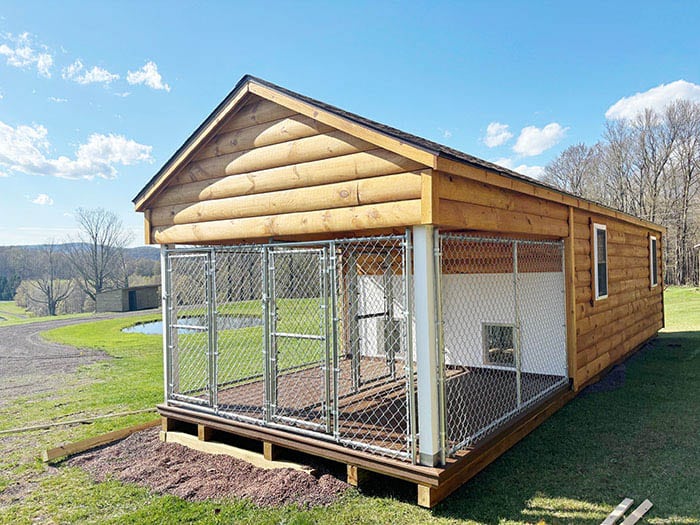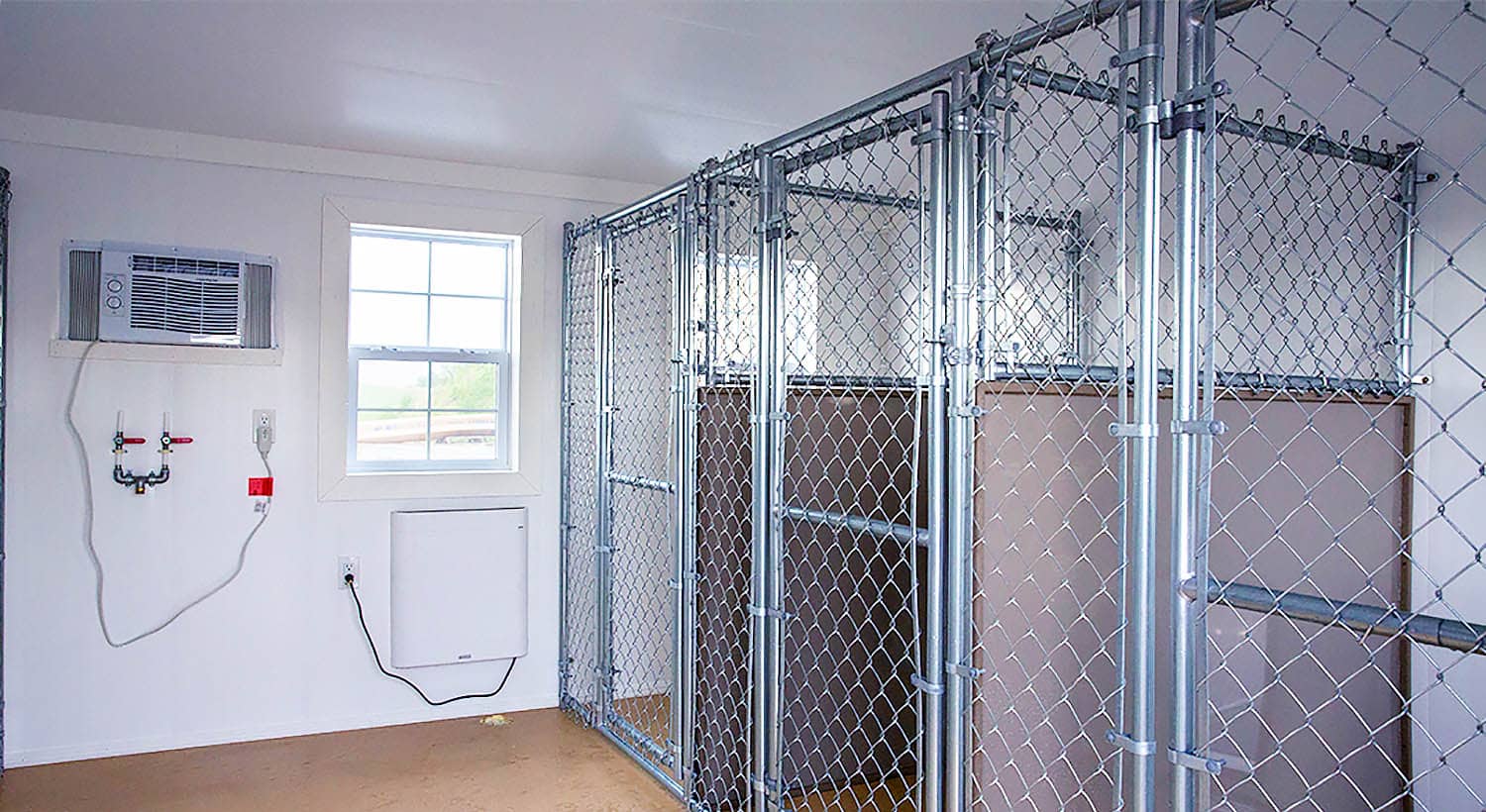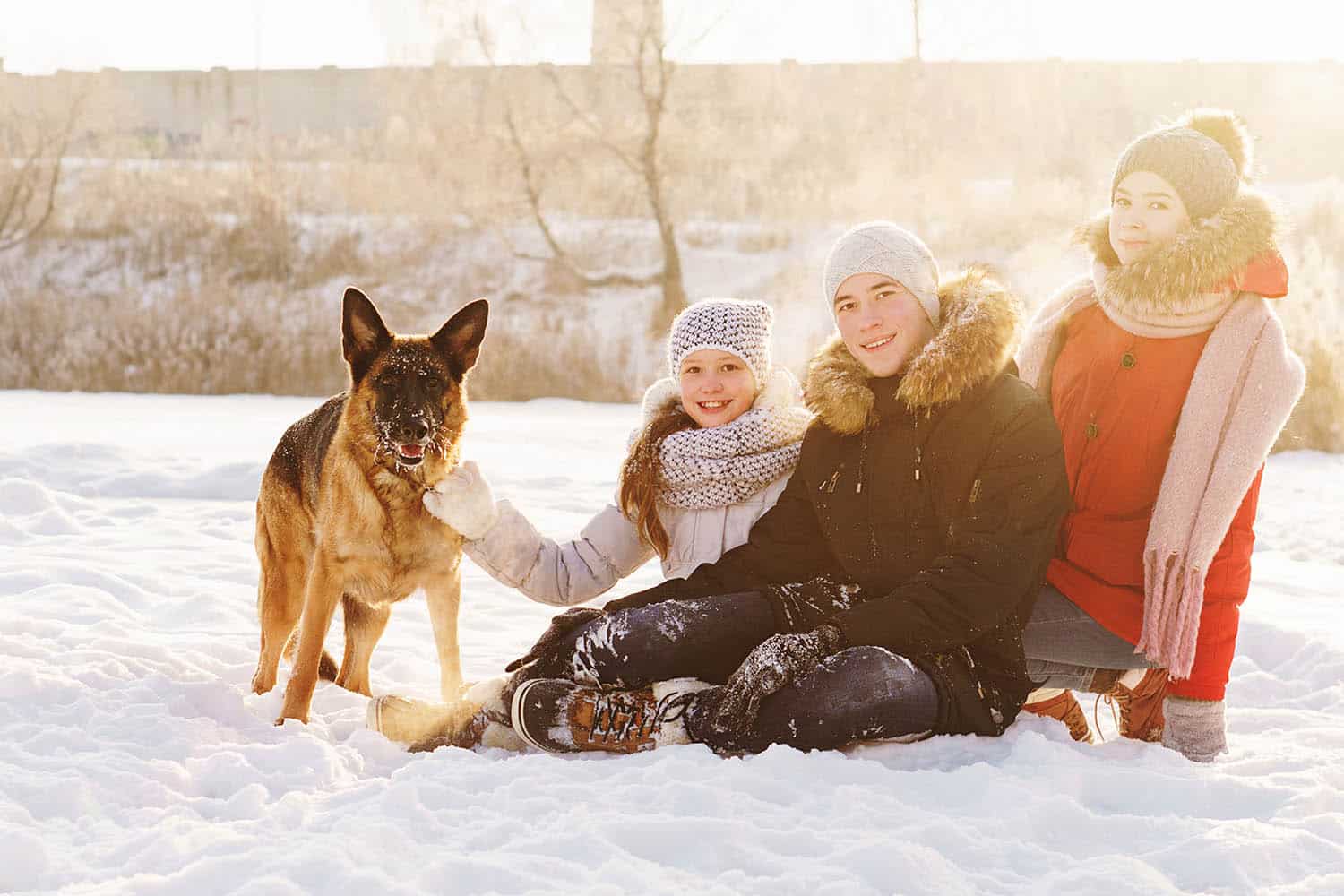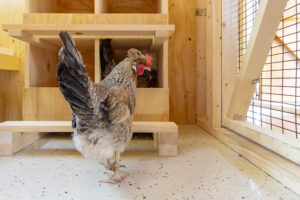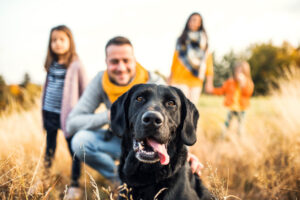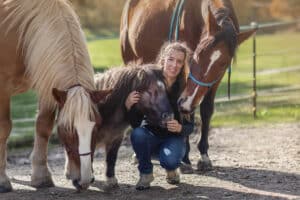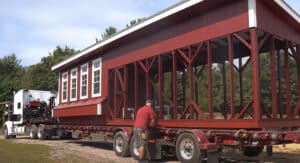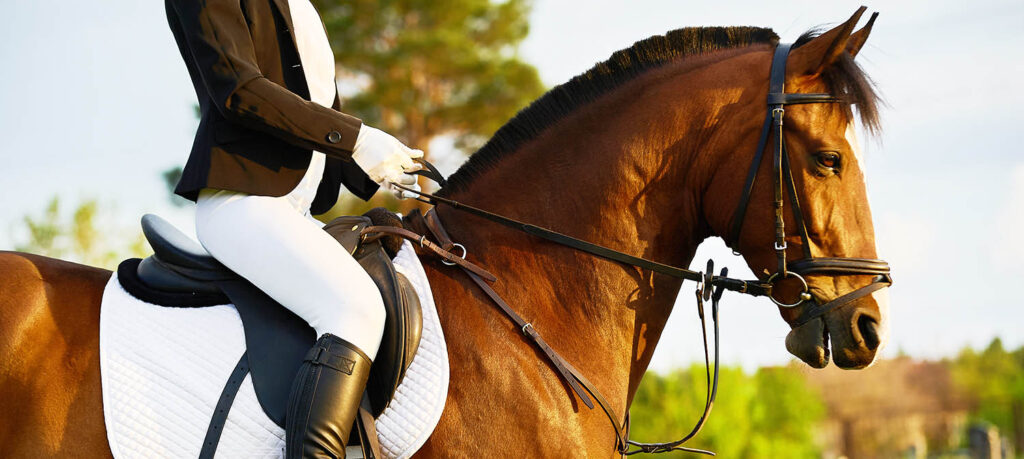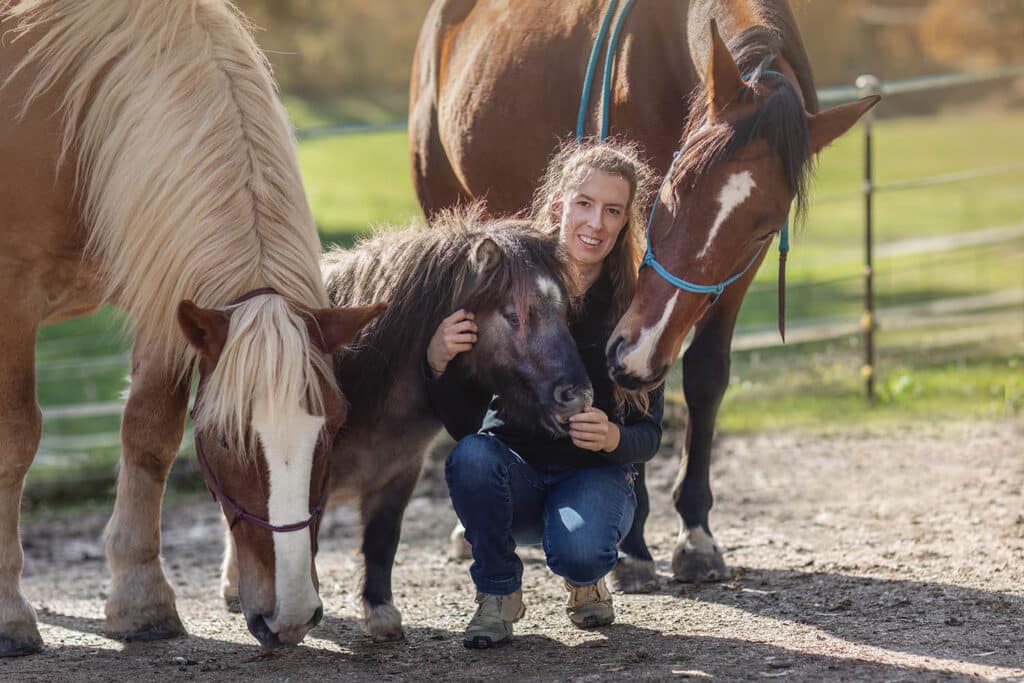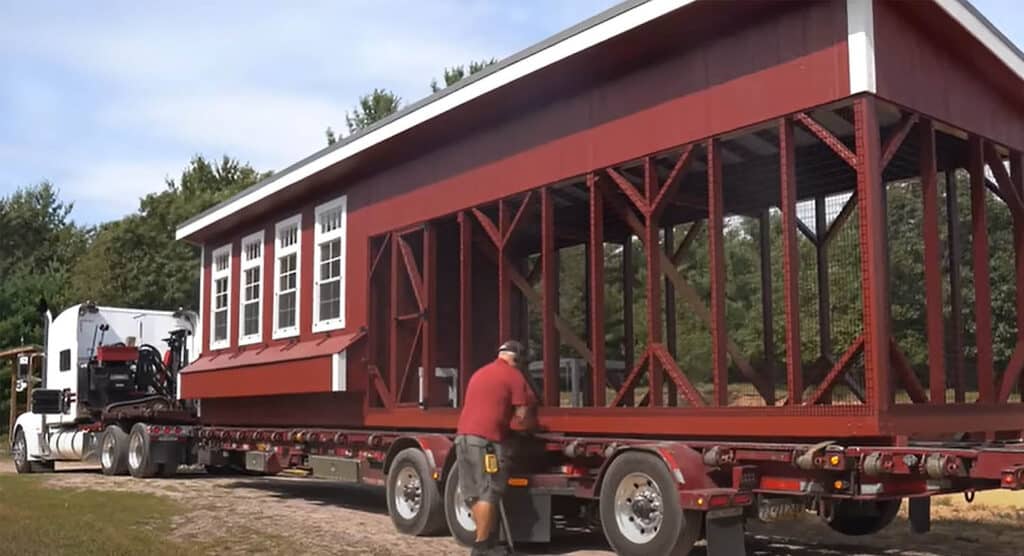A common question among dog owners and homesteaders is: Can dogs live outside year-round? The answer is yes — if the kennel is properly set up for heat, cold, rain, and snow. Many breeds thrive outdoors with the right shelter, but safe outdoor living requires thoughtful planning.
This guide walks through the essentials of an all-season backyard dog kennel, with special attention to fall and winter. You’ll also find a section dedicated to the different needs of rescue organizations, which often manage kennels at a much larger scale.
Is Year-Round Outdoor Living Safe for Dogs?
Breed, Size, and Health Considerations
Dogs vary widely in their ability to tolerate temperatures.
- Cold-hardy, double-coated breeds (Malamutes, Great Pyrenees, Huskies) can handle sustained cold when provided a weatherproof shelter.
- Short-coated or small breeds (Boxers, Chihuahuas) are vulnerable to freezing temperatures and risk hypothermia within minutes.
- Puppies, seniors, and medically fragile dogs have limited ability to regulate body temperature.
No kennel setup overrides these natural limitations, so know your dog’s tolerance and adjust accordingly.
Legal Requirements
At least 23 states regulate outdoor sheltering during periods of extreme cold or heat. Many require:
- Moisture- and wind-proof dog houses
- Raised floors
- Adequate bedding such as straw
- Windbreaks at the entrance
- Protection from heat advisories
Even if your area has no formal laws, these regulations set a strong baseline for humane care.
Social Needs
A dog can have a perfect kennel and still suffer from isolation. Outdoor dogs require:
- Daily human interaction
- Exercise and mental stimulation
- Regular checks for behavior changes (digging, pacing, whining)
A kennel is a safe home base, not a substitute for companionship.
Bottom Line
Dogs can live outside safely year-round if:
- The kennel is properly built and weather-proofed
- Bedding, shade, and temperature management are maintained
- The dog is suited to the climate
- You consistently monitor and care for them
Weatherproofing and Fall Preparation
Fall is the perfect time to fortify the kennel before winter arrives.
Inspect and Repair
Conduct a top-to-bottom inspection:
- Look for roof leaks, cracked siding, gaps between seams, or damaged shingles.
- Close yourself inside the dog house with a flashlight; if you see daylight or feel drafts, seal the gaps.
- Spray the roof with a hose to simulate heavy rain and identify leaks before winter storms reveal them.
Seal and Weatherstrip
Use home-grade weatherstripping around doors, windows, and joints. Caulking and foam backer rod can fill larger gaps. Sealing drafts helps retain warmth and blocks cold air and moisture.
Elevate and Improve Drainage
A raised floor is critical. Ideally the structure should sit on:
- Pressure-treated runners
- Concrete pad
- Gravel or stone base
Good drainage prevents mud pits and standing water. Consider:
- Surrounding the kennel with pea gravel
- Adding a shallow French drain
- Ensuring the yard slopes away from the run
Wind Protection
Use nearby structures or landscaping to block prevailing winds:
- Place the kennel against a building
- Install a wooden panel or fence section
- Use straw bales or shrubs as seasonal windbreaks
Keep leaves and debris cleared from around the structure; piled leaves hold moisture and attract pests.
Winterizing Your Dog’s Kennel
Winter is the season that tests every part of your setup. Preparation makes all the difference.
Choose the Right Size and Structure
A winter dog house should be just big enough for the dog to stand, turn, and lie down. Too large, and the dog cannot warm the interior with body heat.
For best results:
- Use an insulated dog house paired with an attached covered run.
- Make sure the entrance has a door flap or interior baffle to block wind.
- Keep the shelter raised several inches off the ground to prevent moisture and cold from seeping upward.
Insulate and Seal
If your kennel lacks built-in insulation:
- Add rigid foam insulation to walls and ceilings, then cover it with plywood.
- Seal cracks with caulk or wood filler.
- Ensure the roof is watertight and free from rot or loose shingles.
Premium prefab kennels often include R-13 insulation and insulated floors. If you’re retrofitting an older structure, aim to replicate this performance.
Bedding
The best winter bedding is:
- Dry straw (not hay)
- Wood shavings (as a supplement, not replacement)
Pile bedding at least 6 inches deep. Replace weekly to keep it dry, clean, and insulating.
Avoid blankets—they get damp, freeze, and lose insulation value.
Safe Heat Sources
In very cold climates, supplemental heat may be necessary.
Options include:
- Outdoor-rated heated mats or beds
- Infrared wall-mounted kennel heaters
- Radiant heated floors
- Heated water bowls to prevent freezing
If using electric heat, ensure:
- All cords are chew-protected
- Outlets are outdoor-rated
- The kennel has proper electrical wiring
Monitor Your Dog
Even the best winter kennel requires oversight. Watch for:
- Shivering
- Reluctance to leave the dog house
- Lethargy or stiffness
- Lifting paws due to cold ground
- Excessive whining
During extreme weather events—high winds, ice storms, or wind chills below zero—bring your dog indoors.
Nutrition and Hydration
Outdoor dogs burn more calories in the cold. Your vet may recommend:
- Higher-fat food
- Slight increases in daily rations
Fresh, unfrozen water is essential. Heated bowls are worth their weight in gold during long stretches of freezing temperatures.
Special Considerations for Rescue Organizations
While the principles remain the same, rescue groups face additional challenges due to their scale and the diverse needs of the dogs they care for.
1. Durable, Commercial-Grade Construction
Rescue kennels must withstand constant use. Ideal features include:
- Welded wire or steel kennel panels
- Epoxy-sealed concrete flooring
- Insulated interior rooms
- Attached covered outdoor runs
- Sloped floors with drainage
These materials simplify cleaning and withstand heavy wear.
2. Climate Control Systems
Because rescues house puppies, seniors, and medically fragile dogs, they often require:
- PTAC heating/cooling units
- Radiant heat systems
- Air exchange or ventilation systems
- Backup power for outages
Climate control is essential for maintaining safe temperatures year-round.
3. Cleaning and Sanitation
Rescues must prioritize disease prevention. Their kennels often rely on:
- Floor drains or sloped floors
- Waterproof wall materials
- Removable rubber mats or elevated beds
- Industrial cleaning equipment
Winter adds challenges—water used for cleaning can freeze—so extra planning is needed.
4. Zoning and Space Requirements
Many municipalities require specific square footage per dog, noise management, and waste handling guidelines. Rescue organizations must understand and follow all zoning laws before building or expanding kennels.
5. Homesteaders and Working Dogs
Farm dogs and livestock guardian breeds may spend all year outdoors. Their kennels often integrate with barns or outbuildings. Although these dogs are hardy, they still need:
- Windbreaks
- Deep bedding
- Dry spaces
- Roofed shelter that blocks drafts
6. Education and Advocacy
Rescues often see the worst cases of neglect. Their messaging may emphasize:
- Recognizing signs of inadequate shelter
- Reporting dogs left in dangerous conditions
- Advocating for proper bedding, water, and weatherproofing
This differs from homesteader content, which may focus more on building or buying the right structure.
7. Real-World Solutions
Companies specializing in commercial or deluxe residential kennels offer:
- Insulated interior boxes
- Heated floors
- AC units
- Covered outdoor runs
- Epoxy flooring
- Electrical packages
These products demonstrate what a gold-standard, all-season kennel looks like—and provide templates for DIY upgrades.
Conclusion
A well-designed backyard dog kennel can keep your dog safe, comfortable, and healthy in every season. Success comes down to:
- Summer: shade, airflow, water, cool surfaces
- Fall: inspection, weatherproofing, sealing drafts
- Winter: insulation, deep bedding, wind protection, warmth
- Year-round: companionship, cleanliness, hydration, and ongoing monitoring
Dogs can live outdoors year-round, but they depend entirely on you to create an environment that protects them from heat, cold, moisture, and loneliness. With proper care— and the right structure — you can build an outdoor kennel that keeps your dog happy in every season.
If your dog spends time outdoors,
don’t leave their comfort to chance.
Learn MORE about kennel options
designed to withstand real weather!
CLICK HERE




